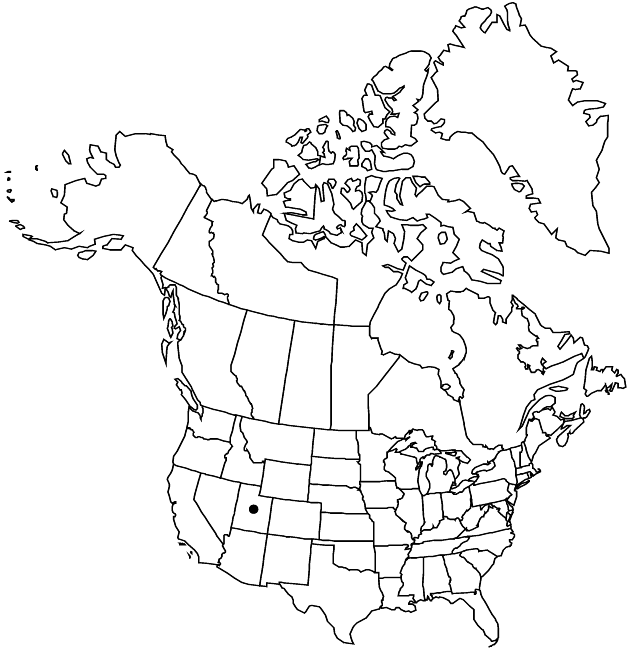Heterotheca jonesii
Great Basin Naturalist 35: 336. 1976.
Perennials, 2.3–6 cm (forming dwarf cushions); taprooted. Stems 1–50, usually decumbent, sometimes ascending (proximal parts often buried in sand) simple, moderately to densely strigose, sparsely hispid, eglandular. Leaves: proximal cauline subpetiolate, blades oblanceolate, 4.8–12.5(–15) × 1.5–3 mm, bases cuneate, margins flat (often curling upon drying), entire, strigoso-ciliate, long-hispid proximally, apices acute, faces moderately to densely strigose, hispid hairs few; distal sessile, narrowly to broadly oblanceolate, (3.5–)5–10 × 1.1–2.4(–3.2) mm, little reduced distally, faces moderately to densely hispido-strigose, eglandular. Heads borne singly. Peduncles 3–5 mm, densely strigose, hispid hairs few; bracts leaflike, little reduced distally. Involucres cylindric to narrowly campanulate, 5–7 mm. Phyllaries in 4–5 series, unequal (outer 1/5–1/4 length of inner), mid lanceolate, mid to distal margins anthocyanotic, moderately strigose, eglandular. Ray florets 7–11; laminae 6–8.5 × 0.6–1.6 mm. Disc florets 10–21; corollas ± ampliate, 3.5–4.8 mm, throats glabrous, lobes (0.3–)0.5–1 mm, sparsely pilose (hairs 0.1–0.3 mm). Cypselae monocarpic, obconic, compressed, 1–2.5 mm, ribs 7–10 (often brownish), faces moderately strigose; pappi off-white, outer of linear scales 0.25–0.5 mm, inner of 25–35 bristles 3.9–6.5 mm, longest weakly clavate. 2n = 18.
Phenology: Flowering Jun–Sep.
Habitat: Bare sandy or gravelly soils, sand pockets in rock crevices of cliffs, exposed Navajo and Kaiparowits sandstone formations, pine-juniper scrub and ponderosa pine woods
Elevation: 1200–2800 m
Distribution

Utah.
Discussion
Of conservation concern.
Heterotheca jonesii is known only from southwestern Utah. It forms dwarf cushions often partially buried in sand. Robust shoots are similar in general appearance to H. villosa var. depressa, which is stipitate-glandular and occurs in northwestern Wyoming. H. jonesii frequently occurs sympatrically with H. villosa var. scabra, a glandular, green-leaved and more robust taxon that is unlikely to be confused with it.
Selected References
None.